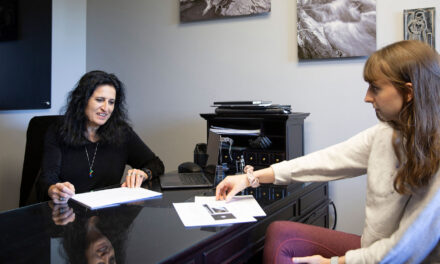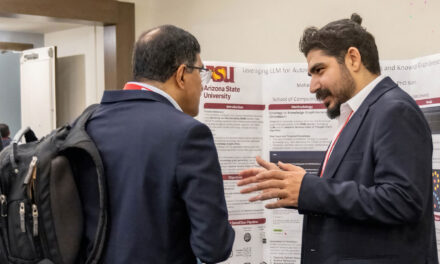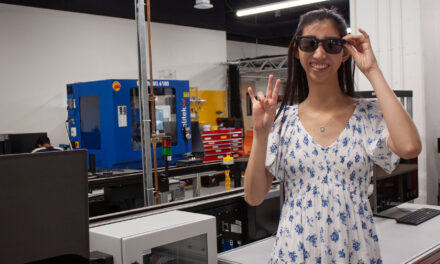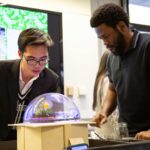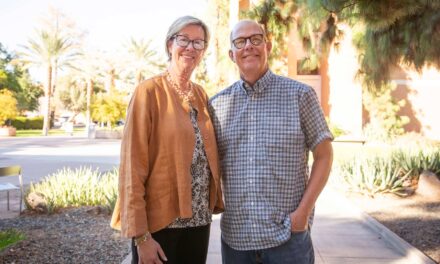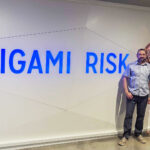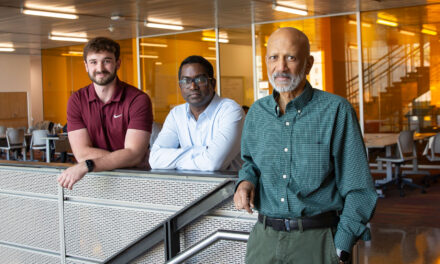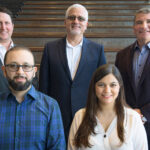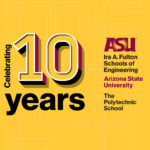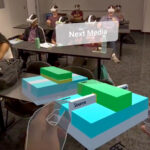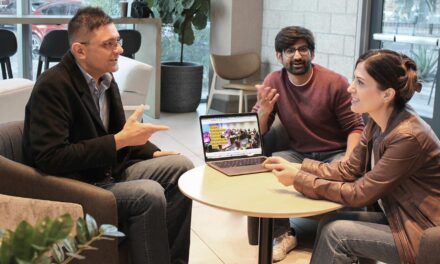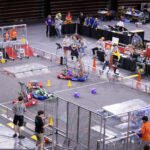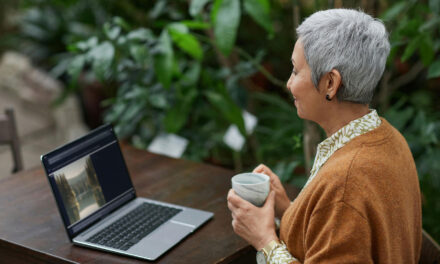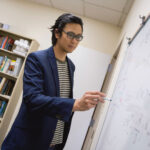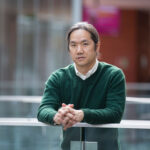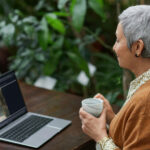
Biomedical student organization leads journeys of discovery
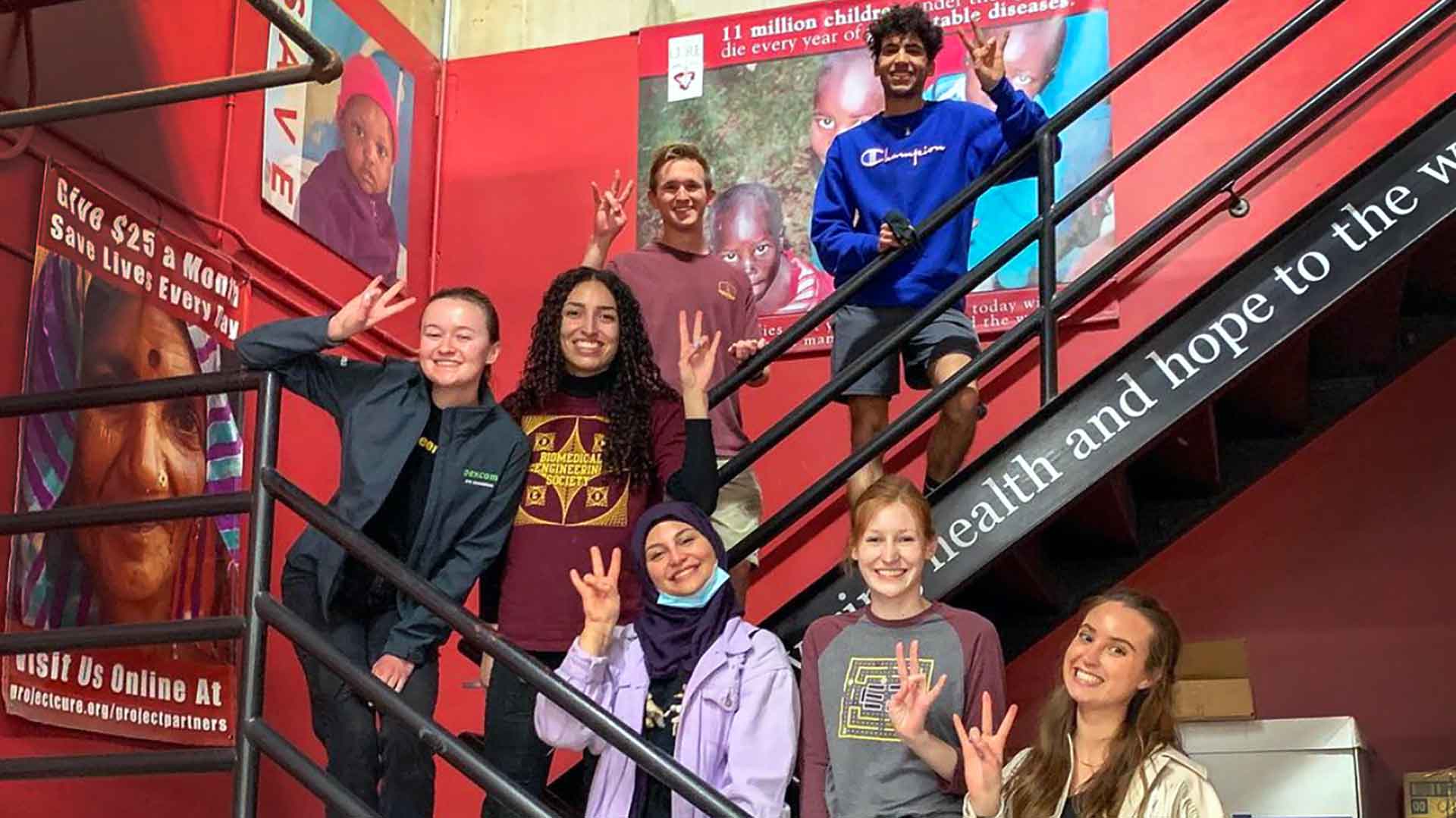
Arizona State University’s Biomedical Engineering Society, or BMES, brings together more than 300 students to explore shared interests related to the field of biomedical engineering. It’s an active community that hosts professional networking events, operates a student mentorship program, engages in community service and seeks to raise broader awareness of the corresponding degree program in the Ira A. Fulton Schools of Engineering at ASU.
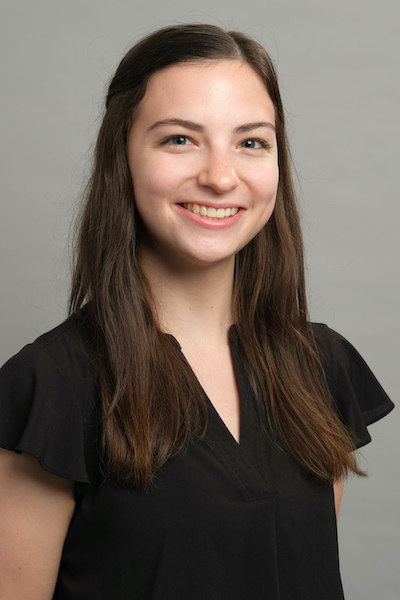
Grace Morgan
Grace Morgan and Margarito Hernandez Fuentes are graduating seniors who serve as chapter president and vice president. We interviewed them to learn more about the organization and the field of its focus.
What is biomedical engineering? Is it designing new technology for health care?
Grace Morgan: Yes, in part. Many people think of medical devices like pacemakers or insulin pumps. And the coursework in our major covers the prototyping of devices as well as the regulatory aspects of creating them for the marketplace. Probably one third to half of us go down that route as a career, working for companies like Medtronic. But the field is a lot more diverse than devices, and BMES serves to familiarize students with the full range of possibilities.
How does the club accomplish that purpose?
Margarito Hernandez Fuentes: We usually have two industry speakers per general body meeting, and we try to bring in voices from different aspects of our discipline. So, for example, we’ve had people from Mayo Clinic and TGen. We want these opportunities to raise student awareness and capture their enthusiasm for the meaningful outcomes that biomedical engineering brings to society. We also seek to do the same through peer mentorship.
How does the student mentorship program work?
GM: Mentors are upperclassmen, and mentees tend to be freshmen. But the experience can take different forms. I led a group of five students who wanted to focus on career discovery. We met several times throughout the year to talk about their interests. Also, I set up lab visits and industry tours to help them explore different opportunities in the field.
MHF: I was responsible for getting students involved with service work for Project C.U.R.E., which is a nonprofit organization dedicated to providing medical equipment to developing countries. During this past spring break, for example, we had several BMES members at the organization’s Tempe warehouse to help with sorting, packaging and labeling boxes of equipment such as catheter kits. These experiences also show them the importance of biomedical engineering to global health care provision.
You conduct outreach with high schools, too. Are they receptive?

Margarito Hernandez Fuentes
MHF: Yes, they are. But biomedical engineering is still a relatively new field, so we have plenty of work to do in terms of raising awareness among younger students. Also, our outreach program previously seemed to focus on prestigious high schools. But then we realized that we should be reaching lower-income communities with potential first-generation college students. As a result, we have focused more of our outreach toward Title I schools in order to gain traction for all STEM fields among underrepresented groups.
Do you have faculty support for all of this work?
GM: Oh, yes. Dr. Sarah Stabenfeldt has been a wonderful advisor and extremely helpful throughout the past year in maintaining club operations through COVID. Additionally, she kindly engaged Dr. Rosalind Sadleir and Dr. Olivia Burnsed to both ensure faculty attendance at our events and support communications with everyone in the School of Biological and Health Systems Engineering [one of the seven Fulton Schools]. We greatly appreciate all of their help and encouragement.
Does BMES collaborate with other student organizations in the Fulton Schools?
MHF: Absolutely. For example, we recently joined with the National Society of Black Engineers to host a networking event in celebration of women’s history month. It was called “E for She” and it served to connect undergraduate students with women in the engineering industry. In addition to attendees from the two host organizations, we had participation from the Society of Hispanic Professional Engineers, the American Institute of Chemical Engineers, Engineers Without Borders and the Society of Women Engineers.
GM: It went really well. Making connections with peers from a variety of backgrounds helps us feel included in the broader engineering world. Also, meeting women of various ages and at different stages in their academic and industrial careers helped me to see what success looks like for women in engineering. So, we’re hoping to expand the event next year with even more representatives from professional engineering and more student organizations from the Fulton Schools.
What else does the future hold for BMES?
MHF: I hope to see our chapter sponsoring members to attend the annual BMES national conference. Doing so offers the chance to connect with a broader range of industry professionals, and the special opportunity to present research alongside student peers from across the country.
GM: Also, we’ve applied ourselves this year to prepare the society for future success. We’ve gathered input from officers who have been in their positions for two years now, and we’ve used their feedback to make the organization even more effective in all of its capacities. One of the most difficult parts of any university club is changing leadership every year. It makes for a steep learning curve, so we’ve really tried to make that curve less challenging.



